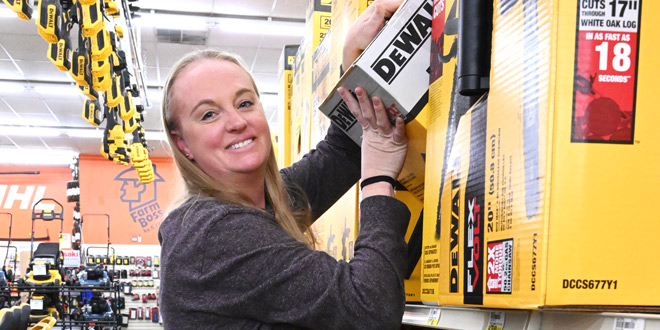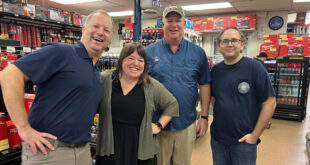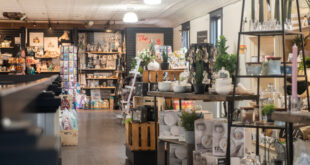Merchandising can be an overwhelming concept to tackle with one store and becomes even more complicated across multiple locations. Setting standards and accomplishing consistency throughout your business builds your brand, allowing customers to more easily recognize it, appreciate its strengths and become loyal customers who will shop at any of your locations.
Technology, communication and teamwork are key aspects of uniform merchandising and branding success across multistore operations. Hardware Retailing spoke with Amanda Craig, merchandising coordinator for Family Center Farm & Home, about how the company successfully merchandises across multiple locations.
Chasing Change
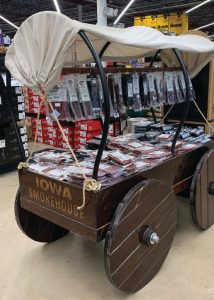
of Family Center Farm & Home stores’ merchandising strategy.
Founded in 1965, Family Center Farm & Home opened its first store in Harrisonville, Missouri, under the name Tractor Parts and Home Supply. The flagship store is still in operation, and the company has expanded to six additional locations in Missouri and Kansas. Craig started at Family Center Farm & Home in 2006 as a cashier, eventually becoming hardware manager and then store merchandiser at the Paola location before moving into a brand new merchandising coordinator position in January 2022.
With the creation of this position, each store now has its own store merchandiser and manager who receive directives from Craig.
“We’re up to seven stores now and are still growing. Before my position was created, we had seven stores doing seven different things,” Craig says. “Now we are working to get all the stores on the same page, but without taking away each store’s creativity.”
The company also created a merchandising planner position in January, which was filled by Marc Fickel, who has been with the company since 2019 and works closely with Craig.
“I’m the communicator who passes merchandising instructions to our store merchandisers and managers, and I visit the stores more often than Marc because my schedule is better suited for overnights and travel,” Craig says. “Marc does more of the background planning and planogram development. We bounce ideas off each other and go over our plans together before they are finalized and sent out.”
Video Views
When it comes to using technology in your merchandising, videos can be a simple yet impactful option to implement throughout an operation. Vendors send videos to go along with their products and the stores display them, Craig says. The videos go with a mix of seasonal and permanent products.
“Videos draw the customer’s attention; they wonder what is making sound and see movement, which draws their eye,” Craig says. “If it’s a good video, it provides additional information and can act as another employee. I also think it can talk the customer into making the purchase.”
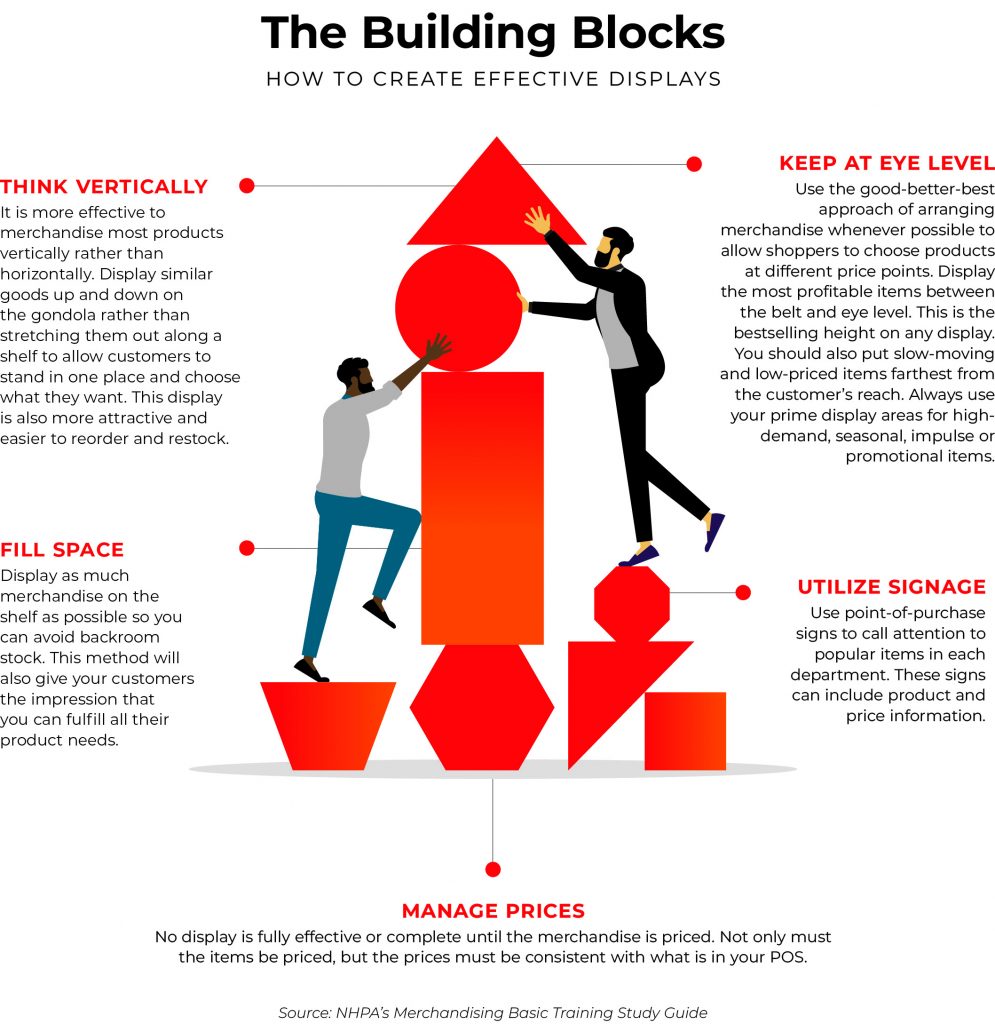
Ultimate Upgrade
All Family Center Farm & Home locations are different sizes and shapes and have diverse layouts. Previously, the store merchandisers and managers relied on their own creativity and sometimes vendor planograms for displays, which made it difficult to maintain merchandising consistency throughout the stores, Craig says.
“Now that I am in my new position, quite a few planograms, endcaps and H-racks are consistent across locations,” Craig says. “H-racks are four-sided displays on wheels that work with shelves or peg hooks. So far we have three identical displays with these elements in each location.”
To handle small inconsistencies across locations, Craig created a best practices document for the store merchandisers that outlines the operation’s merchandising standards.
“The document covers practices like peg hook and shelf length and label location; for example, we like to put our labels on the shelves left justified to the product not centered,” Craig says. “When I visit different locations, the store merchandisers and I go over the best practices in relation to their store and discuss any issues.”
Craig also sends store merchandisers and managers reminders on seasonal changes so they don’t miss putting out items like winter gloves or heaters and to make sure each merchandiser changes seasonal displays around the same time, she says. While some of the directives are given over the phone or email, a lot of them are shared through a project management platform called Basecamp.
“All our store merchandisers have a tablet,” Craig says. “I post planograms and other instructions on Basecamp, and they review them there and can print them out to use as needed.”
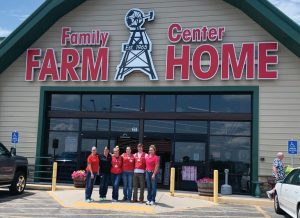
Farm & Home stores strive for
merchandising consistency
while leaving room for creativity.
The stores enact trickle-down communication, with Craig connecting with merchandise and store managers who inform their assistant and department managers and so on down the ladder.
“It’s a group effort to keep our stores looking nice and well merchandised, and communication is key,” Craig says. “Some of our stores assign employees to specific aisles, and those employees are in charge of making sure their aisles are stocked, clean and presentable. It really helps break up responsibilities and keeps one person from having to do it all.”
While written directives are important to keeping everyone on the same page, Craig is also a big believer in hands-on help and is an active participant in production when she visits stores.
“When I travel to our different locations, I check what they’ve done, what they have going on and make some suggestions for their displays, but I’m also there to help them put displays together,” Craig says. “I’m a doer. I’ve always been a doer. I like to physically assist in any way I can, especially when they need to set up something complex or new.”
It’s the Little Things
Family Center Farm & Home has a few additional elements that bring cohesion and build its brand. Other consistencies across stores include utilizing sales signage printed in different colors depending on the sale, dump bins for clearance items and clip strips for add-on sales by the registers, Craig says. She also makes use of permanent, promotional and seasonal endcaps similarly throughout the operation.
While consistency is important to the cohesiveness of an operation, there should still be room for creativity so employees enjoy, take ownership of and gain satisfaction from their work.
“We encourage employees to brainstorm display ideas and share their opinions,” Craig says. “Our merchandisers also share photos with each other of great displays at their stores so others can create the same impact at their store.”
The overall goal is to keep things fresh and exciting for customers, Craig says, and to create a huge statement with products that draw attention and give customers a “wow” factor when they enter. All these little practices combined with the more strategic display planning bring high-quality and standardized merchandising across locations.
“At the end of the day, good merchandising means a better shopping experience,” Craig says. “And a good shopping experience means a more loyal customer base; all of these factors contribute to higher sales.”
 Hardware Retailing The Industry's Source for Insights and Information
Hardware Retailing The Industry's Source for Insights and Information



